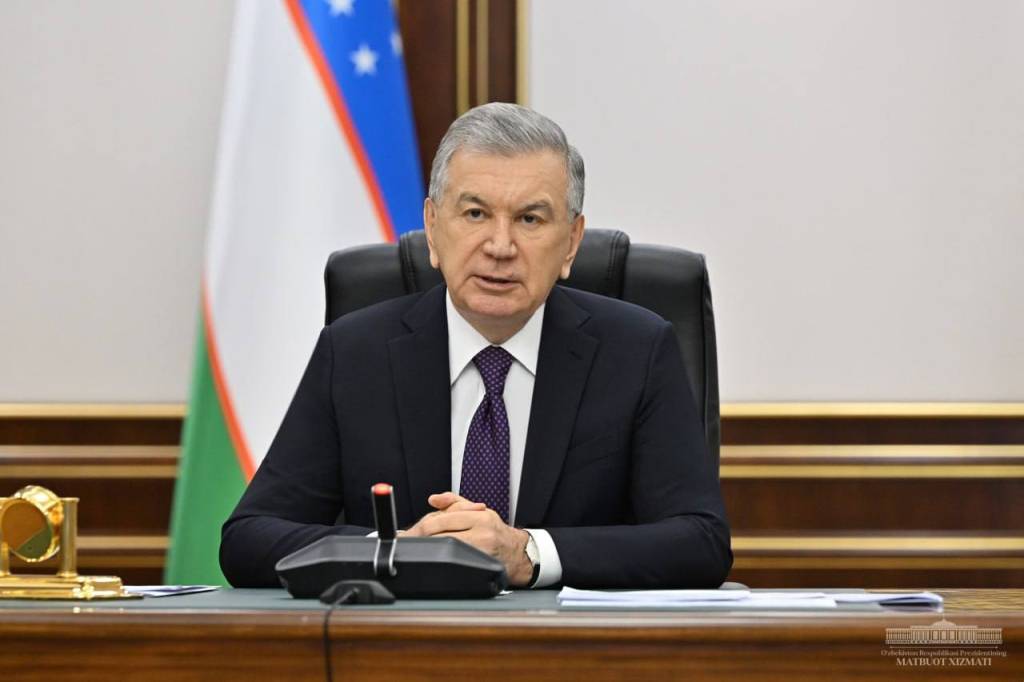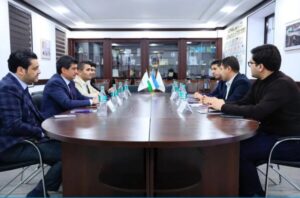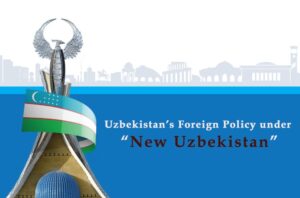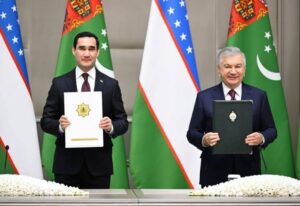Shavkat Mirziyoyev Charts Ambitious Development Plan for Karakalpakstan in 2025

Tashkent, The Gulf Observer: On December 23, President Shavkat Mirziyoyev chaired a critical meeting focused on advancing the Republic of Karakalpakstan’s economic potential in 2025. The discussions centered on leveraging untapped opportunities, increasing investments, and expanding employment avenues in the region.
Milestones Achieved in 2024
This year marked significant progress for Karakalpakstan, underscoring its growing economic potential. The region witnessed the launch of new industrial enterprises, tourist facilities, energy plants, and an IT park. Among the landmark achievements was the inauguration of a 423-meter road and railway bridge connecting Karakalpakstan with Khorezm, reducing transportation distances for cargo and passengers by 180 kilometers.
Additionally, a 240-kilometer section of the “Kungrad-Beyneu” highway, built at a cost of $323 million, was completed and opened to traffic. This development is projected to generate an additional $200 million annually through increased transit and associated services. Preparations are also underway for electrifying a 196-kilometer section of the “Miskin-Nukus” railroad.
Economic Potential and Strategic Plans
Karakalpakstan enjoys more than 50 privileges in industry, entrepreneurship, and infrastructure, including direct land allocation for investment projects. An open dialogue between President Mirziyoyev and entrepreneurs in Nukus showcased the region’s vast profit-making opportunities, attracting foreign investors and specialists.
A comprehensive analysis revealed untapped potential worth $2.5 billion in the agro-industrial complex, tourism, and services. In agriculture, experts proposed reducing low-yield cotton areas in favor of fodder crops and sesame, potentially generating additional revenues of 6.5 trillion UZS from meat and milk production and increasing sesame export revenue by $500 million.
Tourism presents another lucrative opportunity, with Muynak alone offering $1 billion in project potential. The region’s rich cultural heritage sites, including Chilpik, Ayazkala, and Tuprakkala, could attract up to 3 million tourists annually, creating 5,000 jobs and significantly boosting local incomes.
Vision for 2025
During the meeting, the Chairman of Jokargy Kenes of Karakalpakstan presented a roadmap to enhance resource utilization, attract investments, and generate employment. President Mirziyoyev emphasized increasing the share of regional projects within the $3.1 billion investment plan for 2025, calling for an additional $1 billion in regional initiatives. This strategy aims to launch 120 new enterprises, boost exports by $500 million, and employ 150,000 people, reducing the unemployment rate to 5.4 percent.
Key energy projects include the ongoing construction of a 1 GW wind power plant, part of a broader initiative to develop facilities with a total capacity of 9.3 GW. These plants are expected to generate 33 billion kilowatt-hours of electricity annually. The region’s natural gas reserves further underscore its potential to host energy-intensive industries in metallurgy, chemicals, and construction.
Establishing a Project Office
To ensure effective implementation, a dedicated project office will be established to oversee the development of agriculture, industry, and tourism. This office will analyze growth potential in each district, recommend optimal crop choices, and promote efficient land use. It will also assist district hokims in preparing projects for raw material processing, finished goods production, and tourism infrastructure development.
Call to Action
President Mirziyoyev instructed responsible officials to monitor investment project progress, employment creation, and export targets closely. A district-level development strategy will be formulated with input from international experts to maximize Karakalpakstan’s potential.
The outlined measures underscore the government’s commitment to ensuring Karakalpakstan’s dynamic growth, leveraging its strategic location, abundant resources, and cultural wealth for sustained prosperity.


